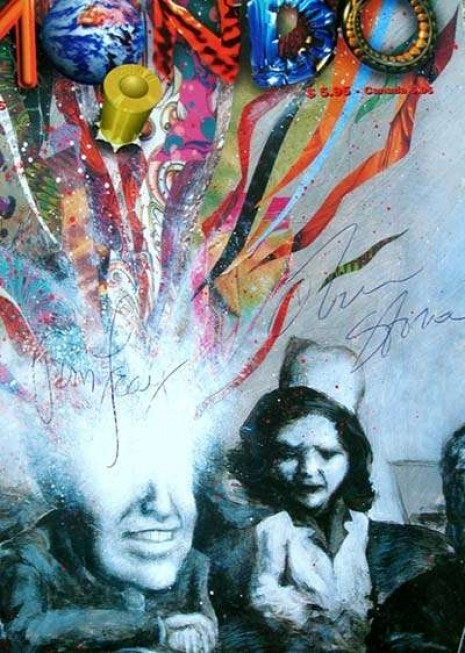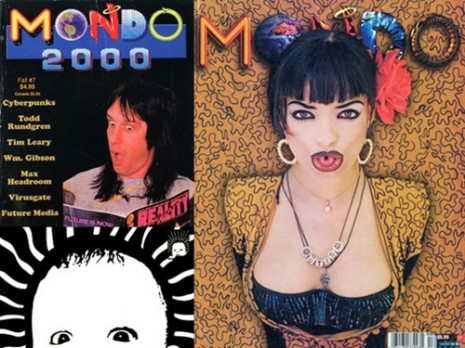
R.U. Sirius, also known as Ken Goffman, co-founder and Editor-in-Chief of Mondo 2000 magazine, has a new blog called Acceler8or. The blog will curate links from around the Internet relating to technological acceleration and transhumanist/Singularitarian culture.
The round of content included an interview with Genesis Breyer P. Orridge, and an interesting essay about the new Adam Curtis documentary All Watched Over By Machines of Loving Grace.
In other R.U. Sirius news, Vice Magazine interviewed him over I.M. recently about the history of Mondo 2000 and he gives DM a nice compliment:
Where are all the cyberpunks that read Mondo 2000 back in the day? Was someone like Mark Zuckerberg a reader?
Mark was too young. Maybe Sean Parker. I hear from people in the computer industry all the time that they were inspired by Mondo 2000. Also, people working in biotechnology, nanotechnology… I think the Mondoids are all over the map, most of them still have many of the same enthusiasms, tempered with experience and a healthy skepticism.You’ve used the term “gonzo anthropology,” the means of studying the more esoteric and under-researched aspects of human culture—what does that mean, exactly?
Alison Kennedy aka Queen Mu, the Mondo 2000 publisher, practices gonzo anthropology. She was the one who uncovered toad venom containing 5-meo DMT in the West. She also explores very odd and arcane anthropological theories about the uses of plants and animals as aphrodisiacs, the use of Calumas as a sort of natural MDMA-like substance. Her magnum opus appeared in Mondo 2000. It was an article about how Jim Morrison used tarantula venom and got penis cancer, based on an entire gonzo anthropological exploration of implications of tarantula venom use (as an inspirational but self-destructive intoxicant) throughout human experience. The Doors producer, whose name I can’t remember, took it very seriously and got very upset about it. Ray Manzarek, I think, was not happy either. It was a wildly brilliant and hilarious and beautifully written piece.Do you feel that in some ways you guys were too left field for some people?
I think we were too anarchic, playful, and incomprehensible for a mainstream magazine about the uprising of the digital technoculture. One of the first things that I noticed about Wired was that they had letters to the editor from people expressing ordinary Republican or Democratic political views, whereas we would get letters about the green aliens on acid who wrote the letter writer’s new software program and how many different drugs Hitler used. I mean, off the wall stuff. But I think Republicans are on a wall that I can’t relate to. So yeah, there was a limited relationship between us and a mainstream audience. The mainstream media people liked us because we seemed colorful and novel. And as a result of the attention, the people who would read the magazine found out about it. Wired does some great stuff online now, though. It’s an OK institution. I have to say though, they send me the magazine and it usually winds up in recycling, unread.What do you see as your legacy? Who is continuing what you guys started?
Well, Boing Boing have been their own thing from the start. They were the small magazine when we were the big one, but they’re a relative. Maybe Dangerous Minds, Richard Metzger’s new site, in spirit. But I think Mondo was unique. It was an art project really using journalism and technoculture as a context. It was just a few unusual individuals following instincts. The mistakes were obvious but the energy of it was so much fun that as Richard Kadrey once said, “You have to have a mighty big stick up your ass not to love it.”
Mondo 2000 and gonzo anthropology (Viceland Today)








